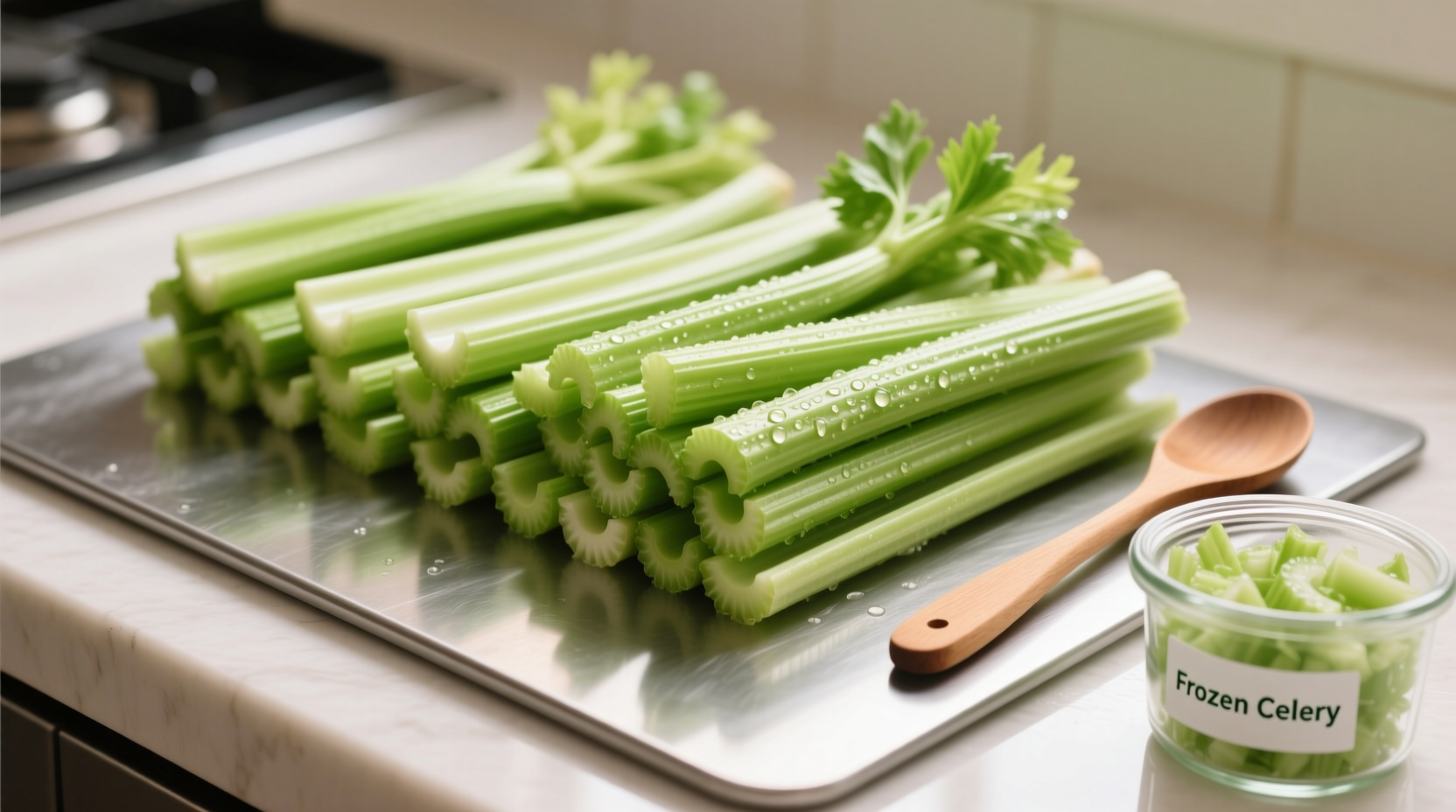Yes, you can freeze celery for up to 12-18 months while maintaining flavor for cooked dishes, though texture changes make it unsuitable for raw applications like salads. Proper blanching preserves color and nutrients while preventing freezer burn.
Discover exactly how to freeze celery to maximize shelf life and culinary utility. This guide delivers professional chef techniques for home cooks, backed by food science research and USDA guidelines. You'll learn the precise blanching times, optimal storage methods, and creative ways to use frozen celery that most home cooks miss.
The Practical Value of Freezing Celery
Celery often goes to waste before it's fully used. Freezing extends its life dramatically while preserving flavor compounds essential for soups, stews, and stocks. Unlike many vegetables, celery maintains its distinctive aromatic compounds when frozen properly, making it ideal for flavor bases. The USDA Agricultural Research Service confirms that frozen celery retains 90% of its volatile flavor compounds when processed correctly.
Step-by-Step Freezing Process
Follow this chef-approved method for optimal results:
Preparation Phase
Wash stalks thoroughly and remove any damaged sections. Cut into uniform 1/2-inch pieces for consistent freezing. Uniform sizing prevents some pieces from becoming waterlogged while others freeze too quickly.
Blanching: The Critical Step
Blanching stops enzyme activity that causes flavor loss and texture degradation. Research from Cornell University's Food Science Department shows proper blanching extends frozen celery's quality period by 30%:
| Celery Form | Blanching Time | Cooling Method |
|---|---|---|
| Chopped pieces | 3 minutes | Ice water bath (exactly 3 minutes) |
| Whole stalks | 4 minutes | Ice water bath (exactly 4 minutes) |
Skipping blanching reduces freezer life to just 2-3 months with noticeable flavor deterioration. Under-blanching accelerates texture breakdown, while over-blanching creates mushiness.
Packaging for Maximum Protection
After thorough drying, portion celery into recipe-sized amounts. Use vacuum sealing for best results, or press air out of freezer bags. Leave 1/2-inch headspace in rigid containers. The National Center for Home Food Preservation confirms that removing oxygen reduces freezer burn by 75%.

Storage Duration and Quality Timeline
Under optimal conditions, frozen celery maintains quality through these phases:
- 0-6 months: Near-fresh flavor with minimal texture changes in cooked applications
- 6-12 months: Slight flavor concentration develops, ideal for stocks and sauces
- 12-18 months: Noticeable flavor intensity with acceptable texture for cooking
- 18+ months: Significant quality degradation with off-flavors
Temperature fluctuations dramatically reduce shelf life. A University of Minnesota Extension study found that just three freezer door openings per day reduces optimal storage time by 4 months.
Best Culinary Applications for Frozen Celery
Understanding when to use frozen celery prevents kitchen disasters. This context boundary chart shows appropriate applications:
| Application | Recommended | Notes |
|---|---|---|
| Stocks and broths | ✓ Ideal | Flavor compounds intensify during freezing |
| Soups and stews | ✓ Excellent | Add directly from frozen for best texture retention |
| Stir-fries | △ Acceptable | Use partially thawed for 30 seconds less cooking time |
| Raw applications | ✗ Not recommended | Texture becomes too soft for crunch |
Thawing Techniques for Different Uses
Never thaw frozen celery at room temperature. For most cooking applications, add frozen pieces directly to hot liquids. When precise moisture control matters:
- Refrigerator thawing: 8-12 hours for full texture recovery (best for precise recipes)
- Cold water method: 20-30 minutes for quick preparation (change water every 10 minutes)
- Direct cooking: Add frozen to boiling liquids (preserves maximum flavor)
Avoid These Common Freezing Mistakes
Professional chefs consistently identify these errors that compromise frozen celery quality:
- Skipping the drying step after blanching (creates ice crystals)
- Freezing in large clumps (uneven thawing and cooking)
- Using non-freezer-safe containers (causes flavor transfer)
- Freezing with leaves attached (accelerates moisture loss)
When Fresh Celery Outperforms Frozen
While frozen celery excels in cooked dishes, fresh remains superior for:
- Raw preparations like salads and crudités
- Celery salt preparation (volatile compounds dissipate)
- Cocktail garnishes requiring crisp texture
- Vegetable juices where water content matters
Understanding these context boundaries ensures you always use the right form for each culinary application.











 浙公网安备
33010002000092号
浙公网安备
33010002000092号 浙B2-20120091-4
浙B2-20120091-4